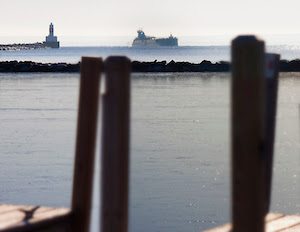 |
| Flatbreads: crip chips served with dips |
Kids Can Easily Cook
After washing hands, young children can help gather bowls and utensils. Then mix one-cup flour and ½ teaspoon salt in a bowl. Trickle seven tablespoons warm water on the flour while mixing with a spoon. Mix in two tablespoons olive oil. If it is too sticky add a little more flour. If it is too dry, add a splash of water. Help children knead the dough for five minutes on a clean surface lightly dusted with flour.
 |
| Young children can help! |
Divide the dough into four or six balls and use a rolling pin to make round flat circles. Adults can spray the bottom of a small frying pan and cook each flatbread about two minutes on one side while children watch from a safe distance. Flip over and cook on the other side for a few minutes. The flatbread should be a light color with a few brown spots. Place a clean towel over them to keep warm.
Many Healthy Toppings
Toppings include honey and bananas, peanut butter and jelly, diced fruit or vegetables, scrambled eggs, peanut butter and apple, turkey and melted cheese in a microwave, or any pizza topping. They can be
 |
| Add toppings of all healthy kinds |
These can also be turned into dipping chips by rubbing them with a little olive oil, cutting into shapes like rectangles and triangles, baked and watched carefully for 5 minutes in a 300 degree oven until crisp.
A puffier flatbread recipe is 2 cups flour, 1tablespoon baking powder, ½ teaspoon salt, ½ cup water, ½ cup dairy or nondairy milk, and 2 tablespoons olive oil.
“Pete’s a Pizza” a book by Steig can be turned into a little play. Children become pizzas or flatbreads by lying on the floor. The pizza maker adds sauce by sprinkling a little water on them and then adds some tomatoes (paper circles or checkers), slices of yellow paper cheese, and other ingredients. The last step is to tickle the “pizzas” a little to heat them up. The little pizzas will laugh like crazy.
More books are “The Little Red Hen Makes Pizza,” “Curious George and the Pizza Party,” “A Pizza the Size of the Sun” by Prelutsky, and “Pizza” by Pienkowski.
Sketches by Mark Nowicki
More Ideas and Activities....See the authors’ book “Learning Through the Seasons” at area bookstores and grandparentsteachtoo.org. For more help to prepare young children for success in school see the authors’ web site: www.grandparentsteachtoo.org. Also check our audio Podcasts WNMU Radio, 90; Youtube video activities; and join us on Pinterest










